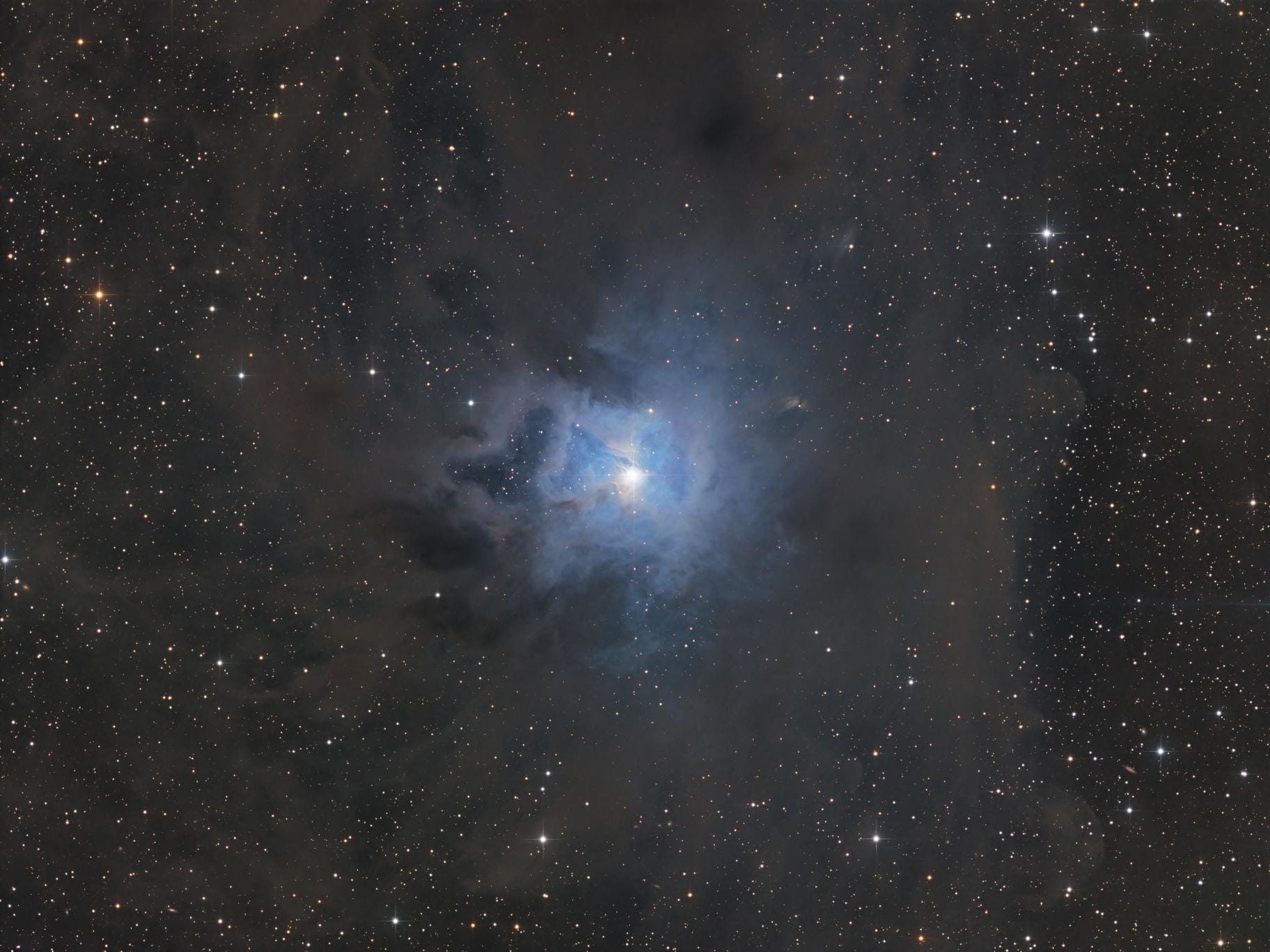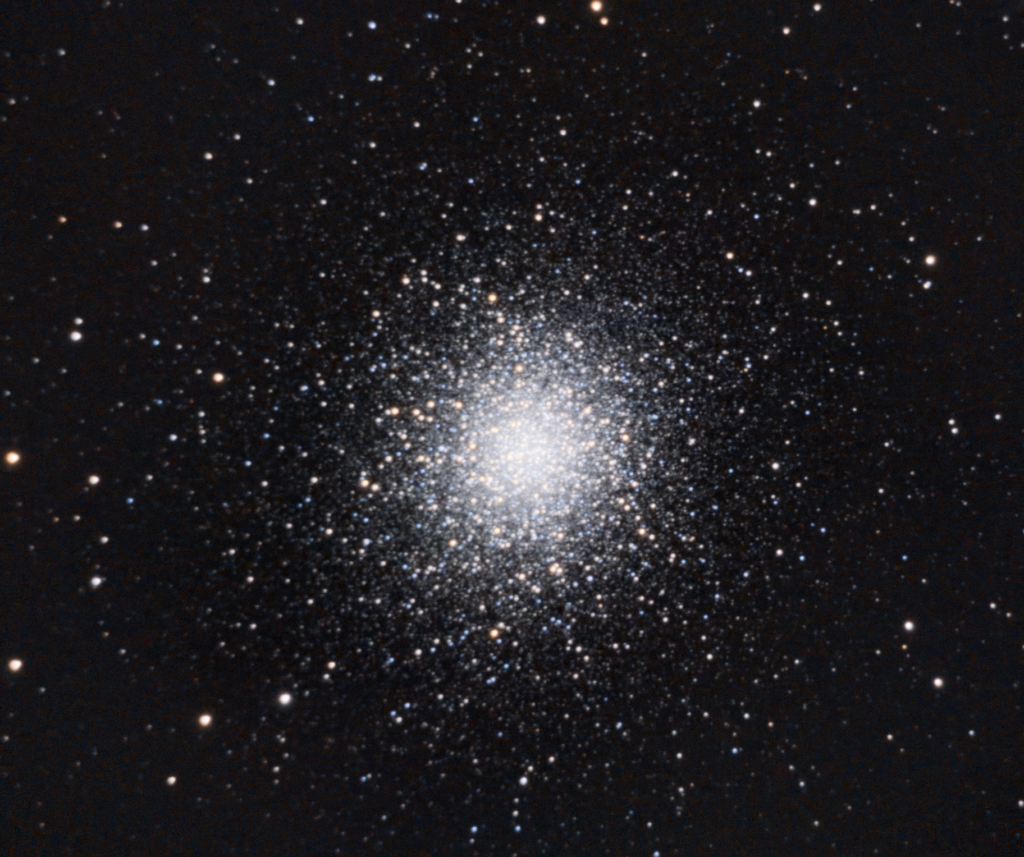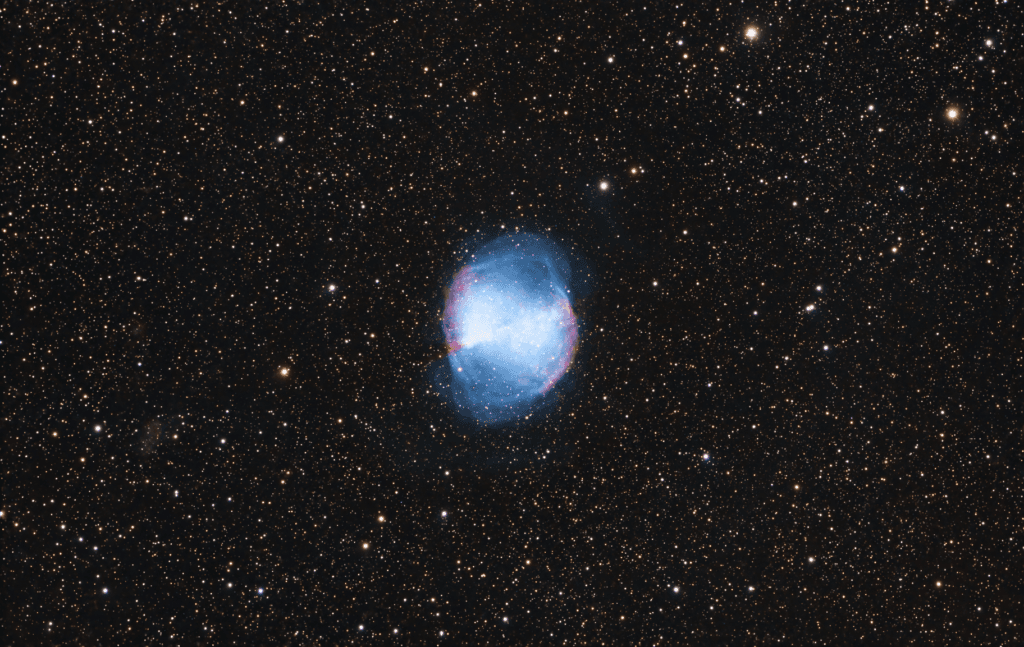
Alright, fellow celestial artists, let’s turn our attention to an object that’s less about blazing glory and more about subtle, ethereal beauty: the Iris Nebula!
If you’re into those soft, dreamy, and incredibly elegant cosmic landscapes, then the Iris Nebula (also known as NGC 7023) is definitely one for your astrophotography bucket list. It’s not a fiery emission nebula pulsating with new stars, nor a dying star’s dramatic farewell. Instead, it’s a testament to the universe’s delicate artistry, like a cosmic whisper in the dark.
A Cosmic Flower in Bloom
Nestled gracefully in the constellation Cepheus, the Iris Nebula is primarily a reflection nebula. Imagine a vast, dark cloud of interstellar dust and gas, stretching quietly through space. Then, picture a single, brilliant young star (SAO 19158) embedded within that cloud. The light from this star isn’t ionizing the surrounding gas to make it glow red (like the Heart and Soul), but rather, it’s simply reflecting off the microscopic dust particles.
This reflection gives the Iris its characteristic soft, shimmering blue hue – the same way our sky is blue because Earth’s atmosphere scatters blue light more effectively than red. It truly evokes the delicate petals of an iris flower, with wisps of dust resembling veins, hence its poetic name.
The Darkness Within
What makes the Iris Nebula particularly captivating for us astrophotographers is the dramatic contrast between the brilliant blue reflection and the intricate, dark filaments of dust that swirl around it. These are not empty spaces; they are cold, dense molecular clouds, often silhouetted against the reflected light, creating a sense of depth and mystery. Within these dark regions, new stars might slowly be forming, hidden from our direct view.
The subtle changes in color and brightness across the nebula are a true challenge and joy to capture. You need a good, sensitive camera and clean optics to really bring out the delicate gradients and the fine structure of the dust lanes. Long exposures are key to revealing the faint glow.
A Poetic Vista
At a distance of about 1,300 light-years, the Iris Nebula offers a serene and poetic vista into the cosmos. It’s a reminder that not all beauty in the universe screams for attention; some of the most profound sights are those that gently unfold, revealing their intricate details to the patient observer.
My new APO scope, with its incredible light-gathering ability and precise focus, is absolutely ready to capture the subtle elegance of this cosmic flower. I can already picture those delicate blue hues and the dramatic, inky black dust lanes. Get ready, because the Iris Nebula is calling, and I’m eager to capture its breathtaking, quiet beauty for you all to see!


